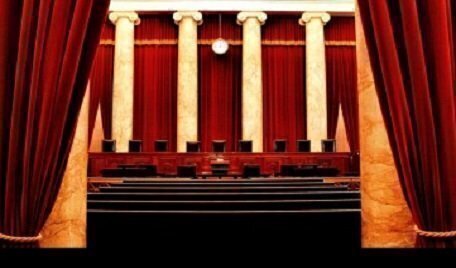U.S. Senate confirmation hearings on Supreme Court nominees have been called a “Kabuki dance,” a subtle minuet,” and even a “mess.” Regardless of their shortcomings, there are good reasons for Americans to invest some time following them. And the opportunity begins today.
 The Senate Judiciary Committee opens its hearings on Monday morning into President Joe Biden’s historic nomination of Judge Ketanji Brown Jackson who, if confirmed, would be the first Black woman to sit on the high court.
The Senate Judiciary Committee opens its hearings on Monday morning into President Joe Biden’s historic nomination of Judge Ketanji Brown Jackson who, if confirmed, would be the first Black woman to sit on the high court.
So why should we “tune in” to the hearings? Three reasons.
First, no one is entitled to a seat on the Supreme Court, no matter how exemplary their personal and professional qualifications. Since the court was formed in 1790, there have been only 17 chief justices and 103 associate justices. Since five chief justices had previously served as associate justices, there have been 115 justices in all. This included former Justice John Rutledge, who was appointed chief justice under an interim commission during a recess of Congress and served for only four months in 1795. It is a pretty exclusive “club.”
For a lifetime appointment on the nation’s most important judicial body, it is not too much to expect of a nominee that he or she face the usual two days of questioning by senators. Some of the questions will be questions on the minds of many of us. The answers may not be fully forthcoming, but they will help us to know more about this person who will be ruling on some of the most important issues of the day.
Second, the hearings provide an opportunity to sense the nominee’s judicial temperament. Justice Elena Kagan endured her hearings with a quick sense of humor, and she seemed to enjoy the give-and-take with the senators on the committee. Her temperament on the bench is much the same. Chief Justice John Roberts reflected the polish and preparation that marked much of his earlier professional life as a Supreme Court appellate lawyer. He is still that person on the bench, business-like, well-prepared, and rarely ruffled. There was a discernible touch of arrogance to Justice Neil Gorsuch’s answers to senators’ questions and it seeps out occasionally in his dealings with lawyers arguing before him.
Finally, the hearings, at their best, are a conversation between the nominee and Americans. In 1987, when Robert Bork was nominated to the Supreme Court, the public became intensely focused on his views of the Constitution. Even cab drivers in Washington, D.C., had their radios tuned to the hearings and wanted to discuss—mostly criticize—Bork’s view that there was no constitutional right to privacy. The Senate rejected Bork’s nomination. He was the last nominee to answer questions fully. Today, nominees strive to say as little as possible.
Even with their cautious replies to senators’ questions, the nominees still share some of their thoughts and approaches to judging. The senators’ questions often identify issues uppermost in their own minds and the minds of their constituents. This conversation, in its limited form, is worth having.
There was no “conversation” for the first hundred years of the court’s existence. The Senate voted up or down on nominees. Before 1916, the Senate Judiciary Committee met privately to consider nominees—and without the nominee. The first public hearing was in 1916 on nominee Louis Brandeis. His nomination was bitterly contested, and the committee felt the need to have a public hearing. Brandeis was Jewish and there was considerable antisemitism at the time. Brandeis also was considered radical by conservative Republicans because of his court battles with corporate executives. Outside witnesses appeared and testified, but Brandeis did not.
But there were no hearings on the next six nominations, from 1916-1923. The first nominee to appear and testify was Harlan Stone in 1925. But that also did not set a precedent for appearances by nominees. The committee did not invite nominees to testify if a hearing was held for the next 30 years. But hearings in 1955 for John Marshall Harlan II did establish a regular practice of nominees testifying in person at their hearings. Congressional leaders, concerned about a runaway liberal court, called Harlan to answer questions about his judicial philosophy.
The next major step in encouraging the “conversation” with the American public came in 1981 when the hearings on the nomination of Sandra Day O’Connor were opened to television coverage for the first time. Many political and court scholars believe television coverage has been one of the key factors in the increasing politicization of the process.
This week, Judge Jackson likely will face the same broad range of questions that other recent Supreme Court nominees have faced. But there may be one difference. Because of her past experiences as a public defender and a member of the U.S. Sentencing Commission, some senators undoubtedly will question her about criminal justice issues.
If confirmed, Judge Jackson would be the first public defender to sit on the high court and the first justice since Thurgood Marshall with criminal defense experience on a bench long dominated by former prosecutors. Of all the questions and issues she will face, her thoughts on our criminal justice system may be the most important and revealing. That alone is worth tuning in to the hearings.
Marcia Coyle is a regular contributor to Constitution Daily and the Chief Washington Correspondent for The National Law Journal, covering the Supreme Court for more than 20 years.







